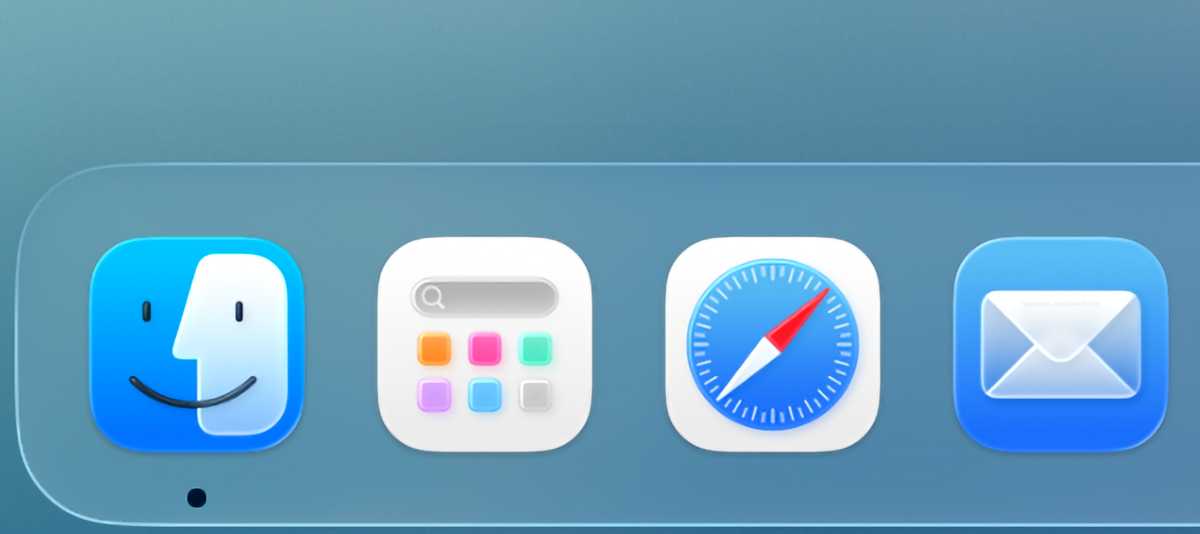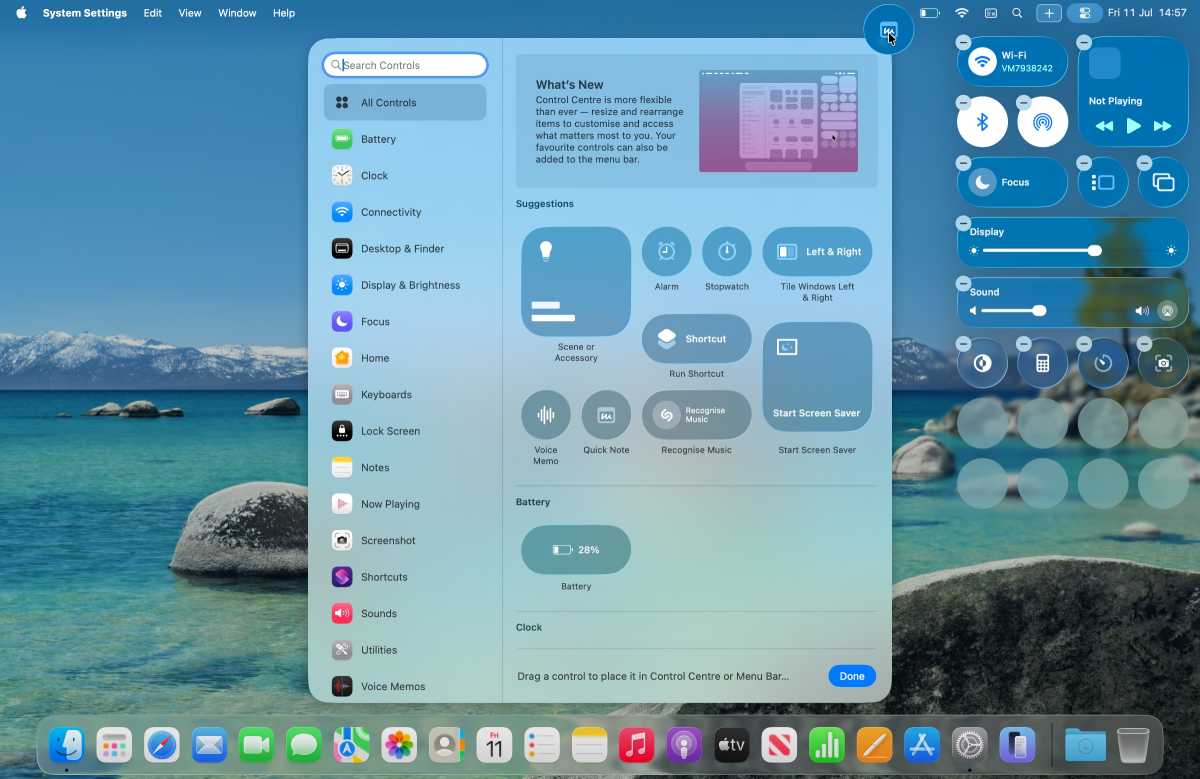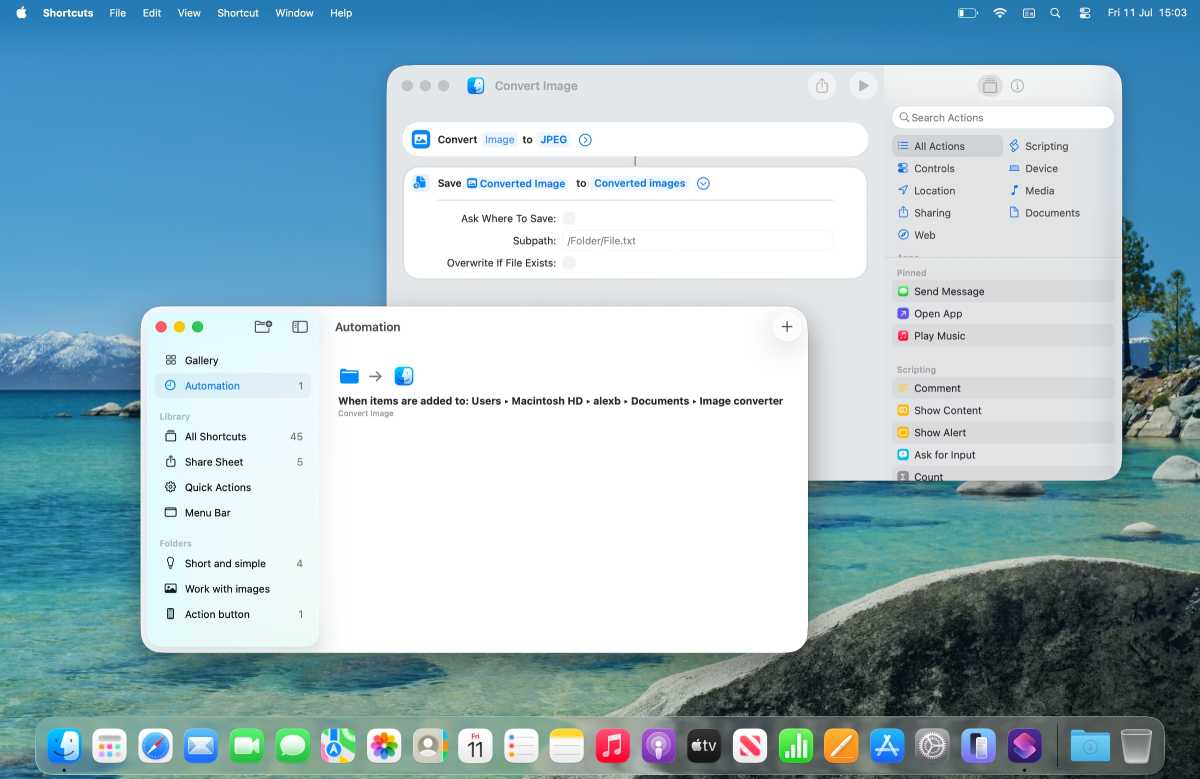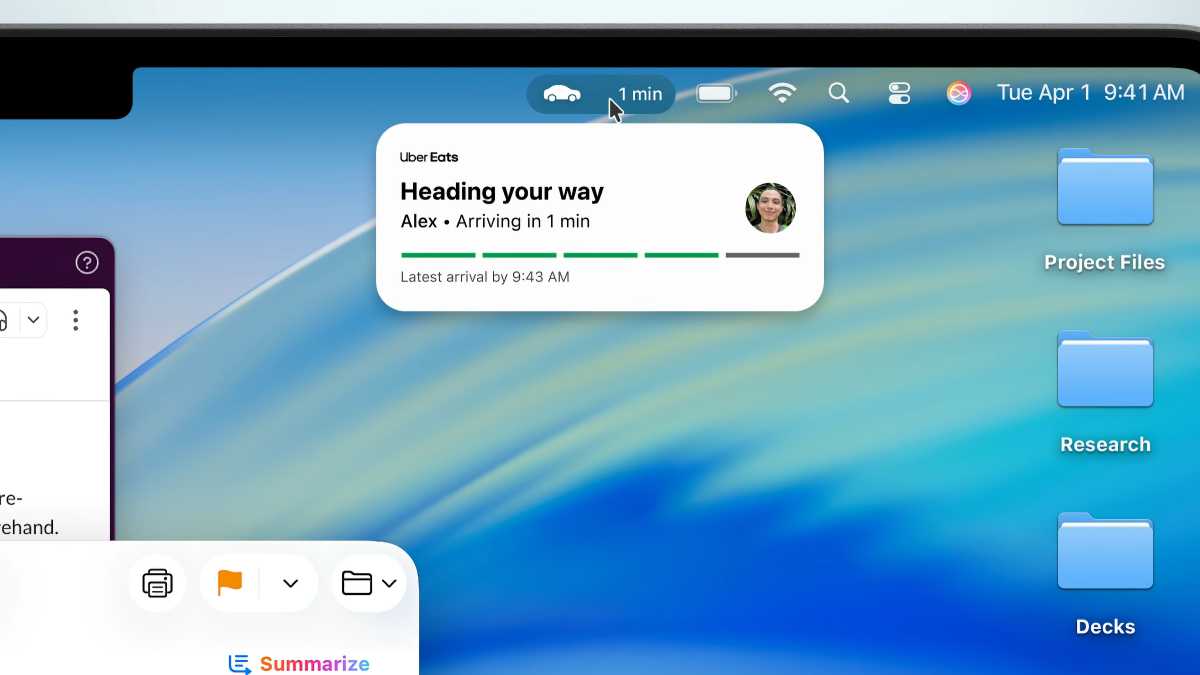The public beta version of Macos Tahoe is here, and that means you can get your hands for the latest MacOS update and all its exciting new features without the need for a developer account. And if you decide to go this way, a lot of good things await you.
The way Beta Beta Macos Tahoe uses for weeks, and there’s a lot I like about it. From the redesign of liquid glass to a completely reworked reflector, the way he considers this to be a meaningful upgrade over MacOS sequoia. Here are five of my favorite MacOS Tahoe features that you want to try once you download the public beta beta.
If you want more information about the next main upgrade MacOS, check out our Superguide Macos Tahoe.
Liquid glass
Redesign Liquid Glass Redesign has been on the lips of all since Apple lifted the lid at the Worldwide Developers Conference in June. It is the complete reimagination of the appearance and the feeling of MacOS – gone is a flat design, replaced by a lot of transparent elements that carry more than a hint of skeuomorphism.
Liquid Glass has been quite dividing so far and it is easy to find people who consider it the best or worst that Apple has been done. However, most controversies appear to stem from its implementation in iOS 26, where overlapping elements can make it difficult to read text and buttons. In MacOS, however, this is a much less problem.
I used Betas iOS 26, Watchos 26 and Macos Tahoe and found that MacOS was by far the most natural home for liquid glass. With a larger display, there are less overlapping elements that destroy the experience. Instead, you get all the attractive glass – with light shining through applications and refractive elements wherever you look – in a much more comfortable environment.

With MacOS Tahoe you can add the transparency of icons to your liking.
Foundry
One of my favorite aspects of liquid glass is Dock. The way we decided to keep our docks icons in their regular full color, because a transparent option, as is pushing the glass a little too far. This gives me the range of colored icons resting on a matt glass layer and the effect is beautiful. Compared to MacOS Sequoia, it’s a gentle difference, but my Mac feels better for it.
Perhaps it is perhaps what causes liquid glass to be much better on macOS than on iOS. It is difficult to ignore glass elements on my iPhone. Everywhere. However, they are much more limited on Mac. You can see them when moving the slider or opening the control center, but it is not in the face as IOS. This makes it much easier to appreciate.
By default, the MacOS Tahoe Bar menu is transparent. Frankly, I love these little changes in the Mac interface. Looking at the old versions of MacOS, the fixed menu panel is now compared to clear. But if you like the background menu bar, you can bring it back to System Settings. The choice is alone.
In MacOS Tahoe there are other options for the offer of menus that you want to try. Now you may decide that third -party applications may appear on the offer bar on an individual basis, which will give you more control over how this area is stacked.

In MacOS Tahoe, the control center items can now appear as icons in the menu panel.
Foundry
But perhaps the best change is associated with a control center. You can also drag them to the menu. Everything from the button to start the screen savior to the quick control to the windows with the tile can now live at the top of the screen and give them just clicks.
More intelligent abbreviations
The application of the abbreviation has long been one of the most sublrade aspects of MacOS. With Macos Tahoe, she got some needed love to add Apple Intelligence functions.

Apple intelligence features now support shortcuts.
Foundry
This opens the door to a pile of powerful and interesting work flows driven by artificial intelligence (AI). For example, you can ask Apple Intelligence to compare the sound recording with the notes that you made from a meeting, and then fill it in any missing gaps.
One of the best implementations is Apple Intelligence. If you are stuck on how to express something – or just want some other ideas that you might not think about – you can create an abbreviation that takes your text and reformulates it into something much more sophisticated.
The shortcut application also gained automation of functionality that will lead it to speed using its iOS equivalent. The way in which absolute age gives you all kinds of powerful options, such as creating a folder that automatically converts file formats for anything you drop it, or set up a number of actions to open the onhun application. It’s a durability, it has a long time to get here, but it’s better late than never.
A brand new reflector
One of the biggest revamps in Macos Tahoe focused. Search-Bar-Cum-App-Luncher was grants with a new set of superpower and became even more useful. As a result, you often need to run another application.

You can perform tasks as part of Spotlight Instruad from the application opening. For example, you can create a calendar without opening the calendar.
Foundry
For example, to write e -mail, you usually need to open your e -mail client and click on surrounding menus and send a message. With the new reflector, you can simply hit the e -mail, container and happy, and then fire the mission without loading the e -mail application.
One of my favorite uses of this feature is to quickly create new calendar events. This helps me manage my day and add new work tasks to my weekly plans, all from the center of attention.
With the addition of Quick Keys, it does everything that requires even less effort. With fast keys, you can assign an abbreviation of any action you can do in the reflector. For example, with my calendar, the set “No” as my shortcut to create a new event. Then I have to run the referencelight, enter my new shortcut, then enter your new event details and press the return.
Speaking of shortcuts, they are now integrated into focus. We will return to my renumbling example above, Macos Tahoe allows you to highlight some text, call the reflector to find the shortcut and then start it from the application. There is no need to run the shortcut application or take your hands off the keyboard.

Live activities you are used to seeing iPhone are now available on Mac.
Foundry
Live activity
The feature of live activities was a great iOS addition, allowing you to stay in speed with sports scores, vans and others from your iPhone screen. In MacOS Tahoe, live activities from your iPhone are now mirrored on Mac. Just click on the menu bar icon and display the widget of the selected activity.
It might sound like a small feature, but when working on my Mac, I actually found it very useful. My iPhone is often in your pocket or other table far from where I work. If I have something important to follow the widget of living activities, it is a pain that switches between my devices, especially when my iPhone is out of reach.
In Macos Tahoe, this information is just clicking on my Mac. It means less interruption of my work without losing an overview of the activities. It is a great way to reduce distraction and disruption and concisely demonstrate Apple’s ability to combine your hardware, software and heterogeneous devices into one trouble -free experience.
